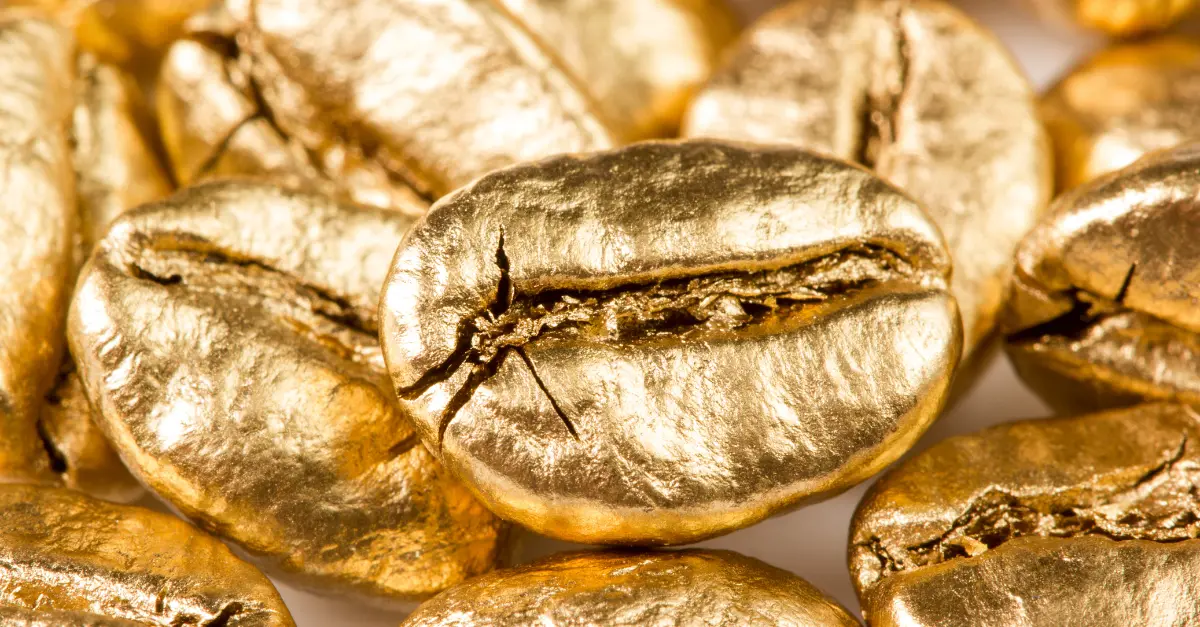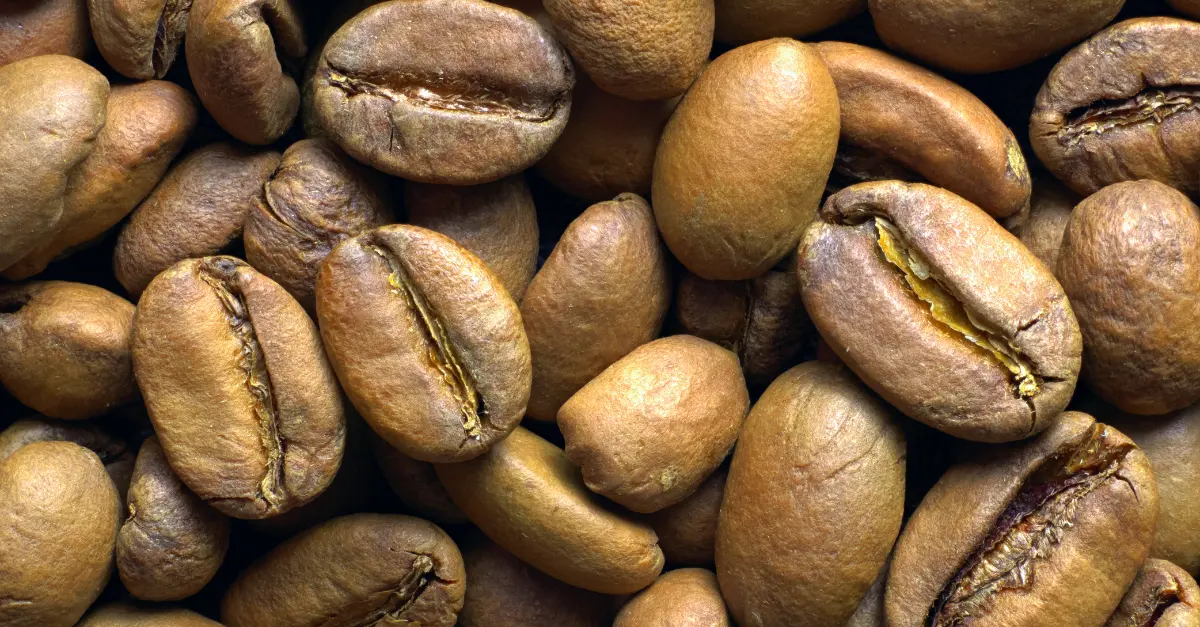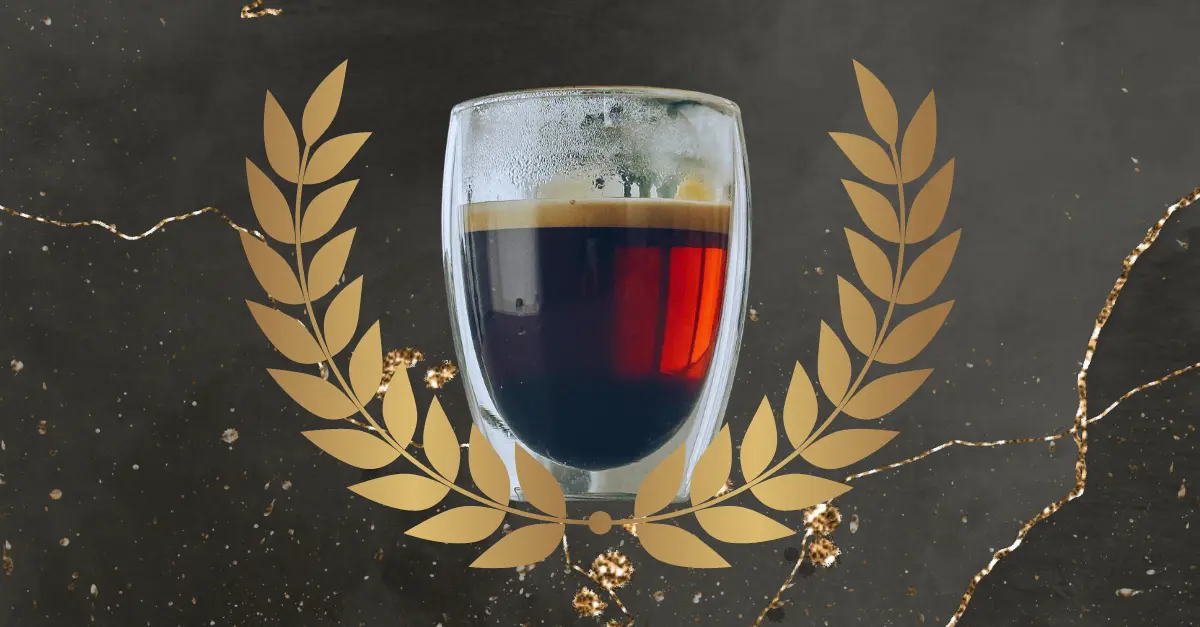You’ve probably tasted American or French roasted coffee, but the new-to-the-scene gold roast coffee is worth brewing.
Defined by its roasting profile, gold roast coffee features little acid and no bitterness with all the flavorful taste you expect from coffee. The morning drink’s golden color resembles honey. Because it’s roasted between a white and light roast, the brewing method is more similar to tea than coffee and doesn’t require balancing milk or creamer.
Gold Roast Coffee is new and hasn’t caught on in the coffee shops around the world due to new achievements in coffee roasting. People who roast it love the aromatics and flavors and find it’s even pulling non-coffee lovers to its side. Keep reading to learn about its taste, roast profile, origins, and where to get your hands on it.
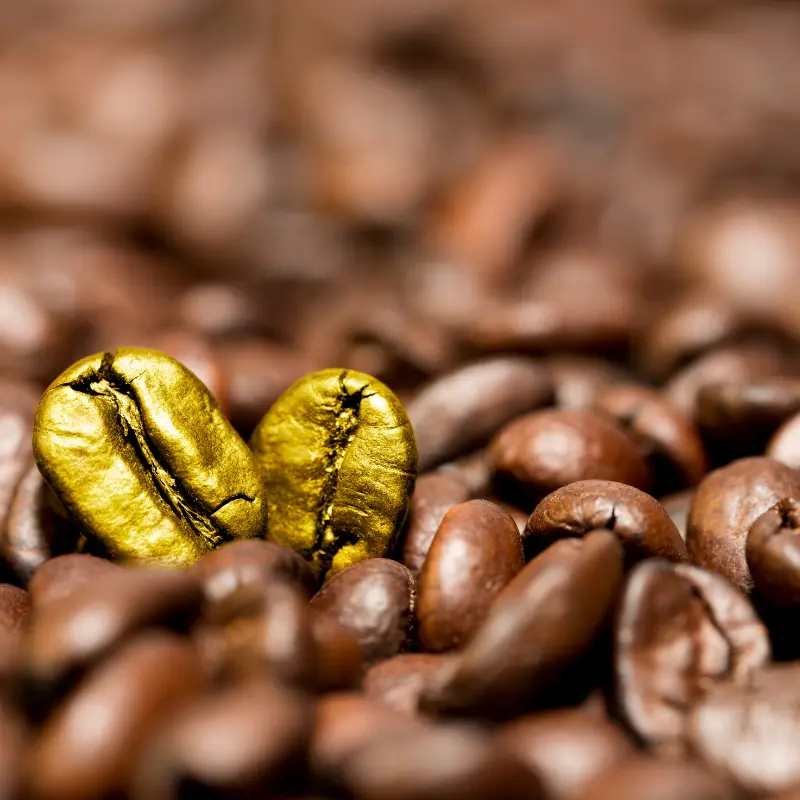
What is Gold Roast Coffee?
When I first heard someone say gold roast coffee, I thought it was a new coffee brand. Soon after I learned it was a new stop on the roasting spectrum, I had to try some for myself. The flavors and appearance of the coffee will leave you shocked because it retains so many of the best parts about coffee without shunning those who don’t like the acidity.
First, you know about light, medium and dark roast coffee, right? Well, the spectrum is bigger than you think. The light roasted coffee is the coffee you get after the first crack you hear when roasting coffee beans but if you stop the process before the first crack or before it reaches 180°C or 356 °F, well, that’s when you enter the realm of white, gold and blonde roast types.
Green Coffee Beans — Starting from unroasted coffee beans, commonly known as green coffee, the beans are harvested from the fruit and dried to attain a healthy green color. At this stage, green coffee is far from the familiar beverage we enjoy, bearing an earthy flavor. The beans are bright green, lacking oil on the surface, and enclosed in a tightly-sealed cleft. Green coffee serves as the foundation for various coffee roasts, each with its unique flavor profile, and sets the stage for further exploration into the world of roasting.
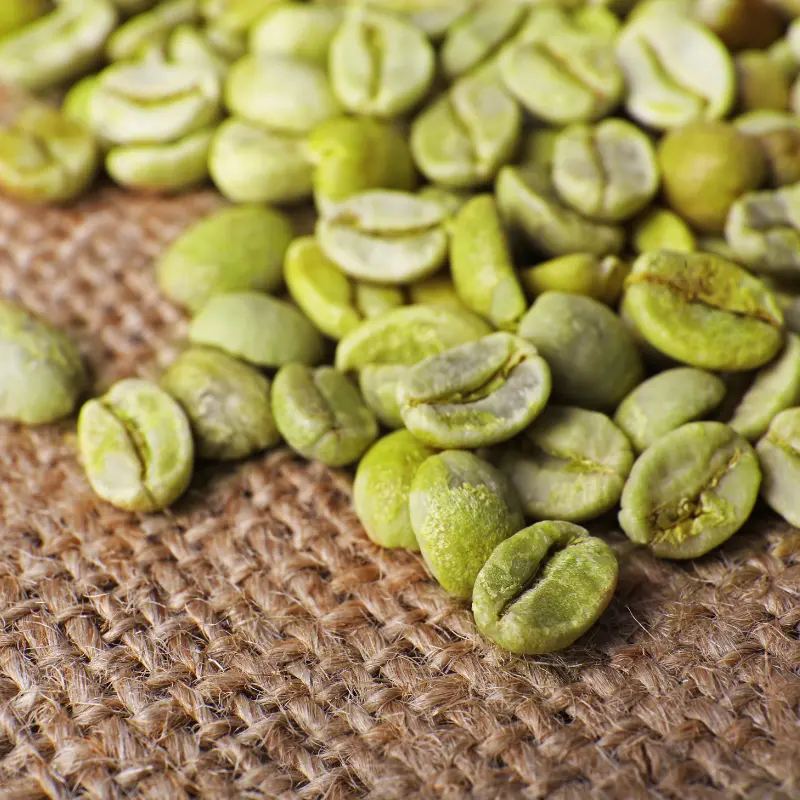
Green Coffee Beans
White Coffee — White coffee’s distinct characteristics in appearance, taste, and overall outcome stem from its unique roasting method. Unlike traditional roasts that reach temperatures of 450-480 degrees Fahrenheit, white coffee beans undergo a much gentler roasting process at just 325 degrees. The roasting is carefully timed to pull the beans resulting in a significantly lighter color and a milder flavor profile. This precise roasting technique gives white coffee its clear differences, making it a captivating option for those seeking a more delicate and nuanced coffee experience.
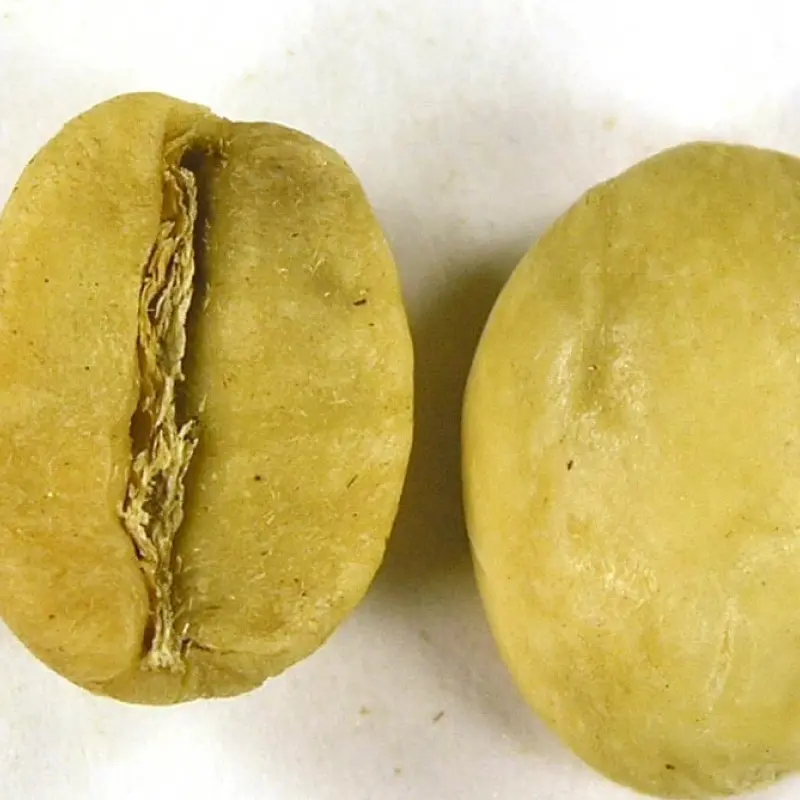
White Roast Coffee (Sweet Maria Coffee Library)
Gold Roast Coffee — A relatively new addition to the coffee roasting spectrum, gold roast coffee has garnered attention for its distinctive qualities. Achieved at a specific temperature range, usually around 350-to-375 degrees Fahrenheit, the beans are lightly toasted. The resulting beans possess a slightly tanned, matte texture, and impart a tangy and acidic flavor profile. However, what sets gold roast coffee apart is its remarkably lower acidity compared to traditional medium and dark roasts. It retains many beloved characteristics of coffee, including nutty and chocolatey notes, making it an enticing option for those who prefer a smoother, less acidic brew.
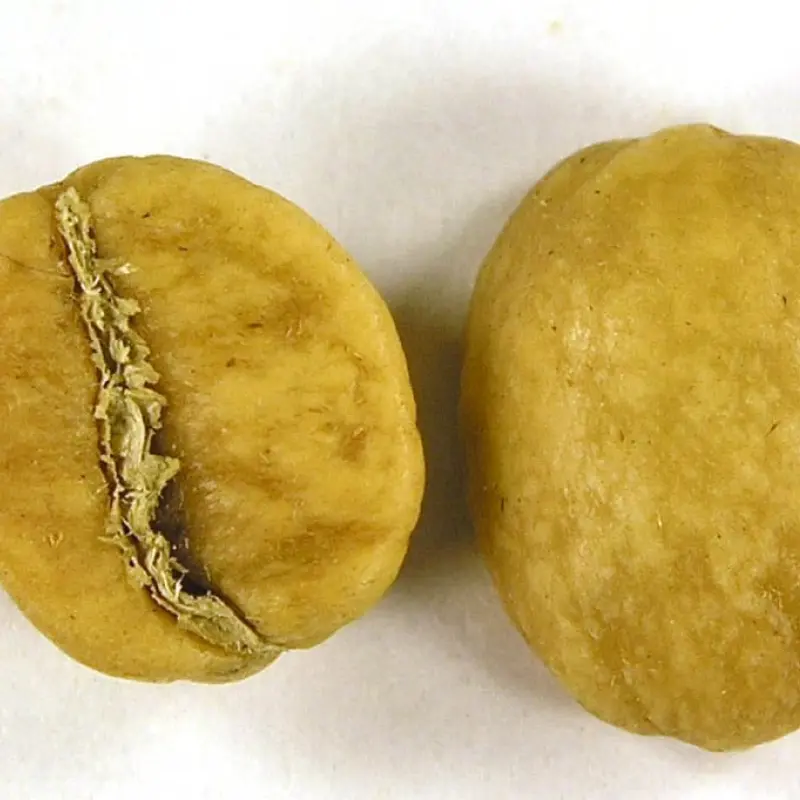
Gold Roast Coffee Bean (Sweet Maria Coffee Library)
Blonde Roast Coffee — Often associated with light roasts, blonde roast coffee has gained popularity, particularly with Starbucks’ introduction of its blonde espresso. Closer to a city roast, which is a medium roast, the blonde roast is achieved by lightly toasting beans just before the first crack, typically between between 355-400°F degrees. The resulting beans exhibit a slightly tanned, matte texture and offer a tangy and acidic flavor profile. Retaining the authentic flavor notes from the coffee cherry, blonde roasts provide bright, delicate, fruity, and floral tastes. While not everyone’s favorite due to its higher acidity, exploring blonde roast coffee opens up new possibilities for coffee aficionados seeking a vibrant and unique taste experience.
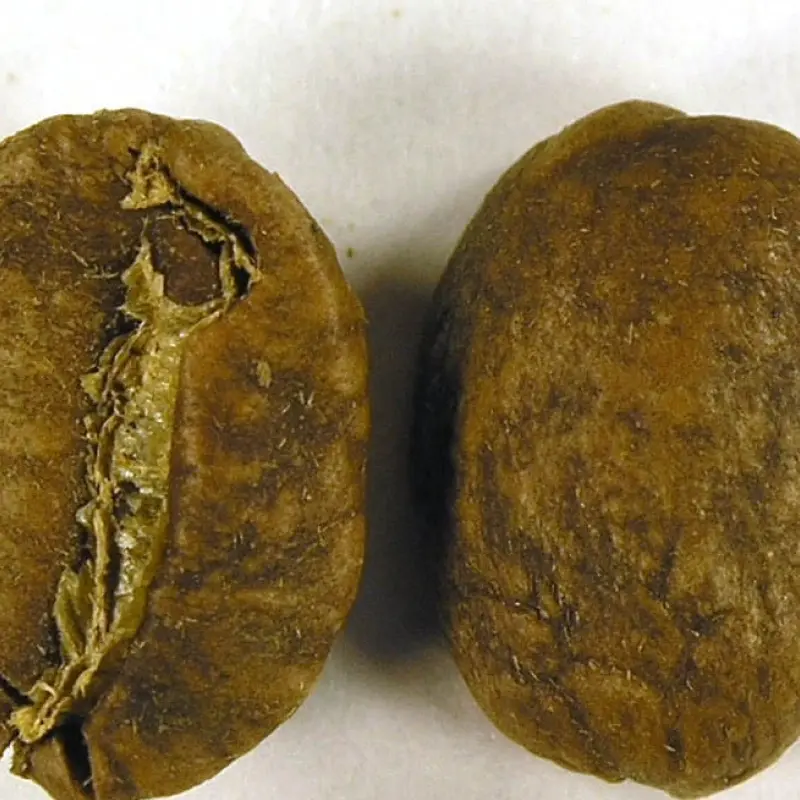
Blonde Roast Coffee Bean (Sweet Maria Coffee Library)
Light roast coffee — Starting from a bean after it has been taken from the fruit and dried to a healthy green color, light coffee often finds itself as closer to tea than traditional coffee. Referred to as the “first crack” roast, light roast coffee takes its name from the initial stage when the beans begin to expand and crack. During this roast, the coffee beans reach an internal temperature between 180°C - 205°C°F (356 and 401°F), resulting in a very light color and a dry surface with no visible oil. The flavor profile of light roast coffee tends to be noticeably acidic, yet it offers delightful fruity notes and a highly aromatic experience.
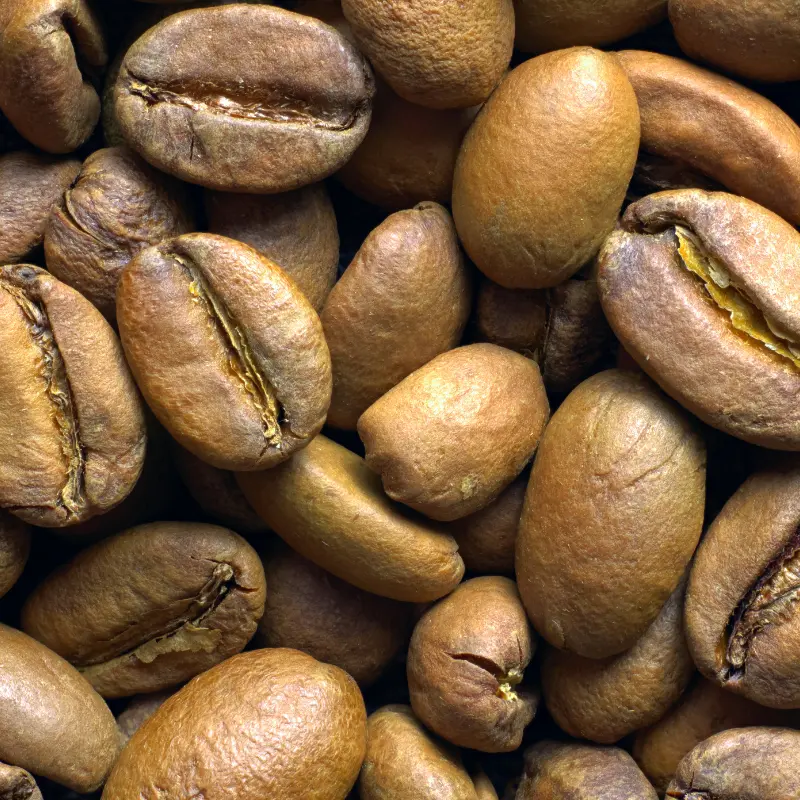
Light Roast Coffee
Medium roast coffee — At the coffee bean’s first crack and begins to turn light brown, medium roasts find a balance between the new, light coffee and classic, traditional dark coffee flavors. Medium roasted coffee is taken to an internal temperature of 210°C - 230°C, just after the first crack and in anticipation of the second crack. This roast level imparts a slightly fuller body compared to the light roast, while also mellowing out the acidity.
The types of medium roast coffees include: American, City and Full City roasts.
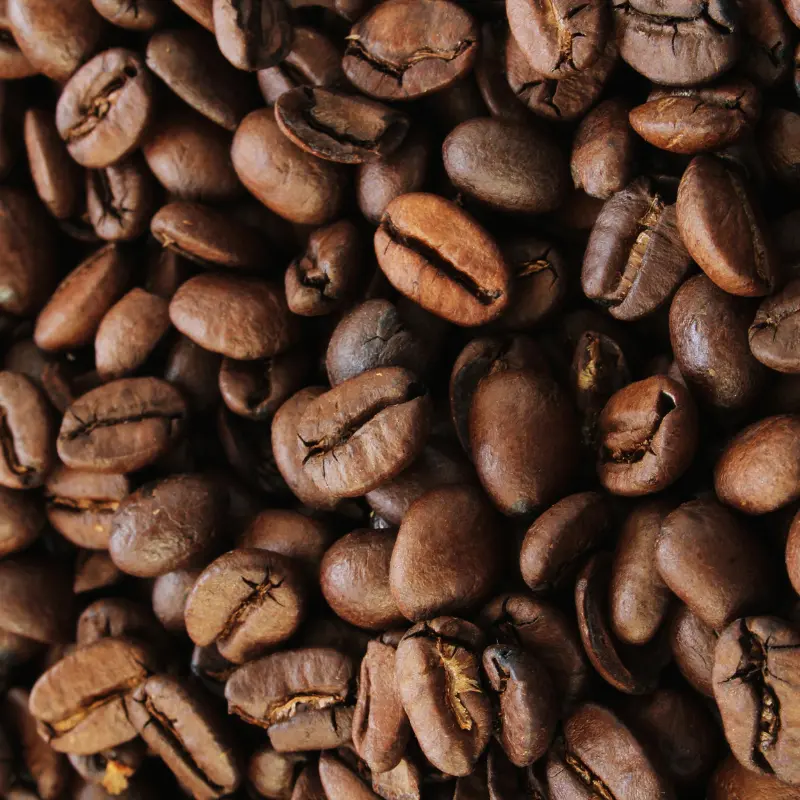
Medium Roasted Coffee Beans
Dark roast coffee — Classic coffee is dark coffee. Past the second crack, the roasted coffee flavors are syrupy when pulled from an espresso machine and black when served from a drip brewer in a diner. Dark roast coffee is achieved at temperatures ranging between 240°C - 250°C. The high roasting temperatures cause the beans to develop visible oil on their surface. This roast level results in a notably sweeter flavor, owing to the extended roasting time, allowing the sugars in the coffee to caramelize.
The types of dark roast coffees include: Italian, French, and Vienna roasts.
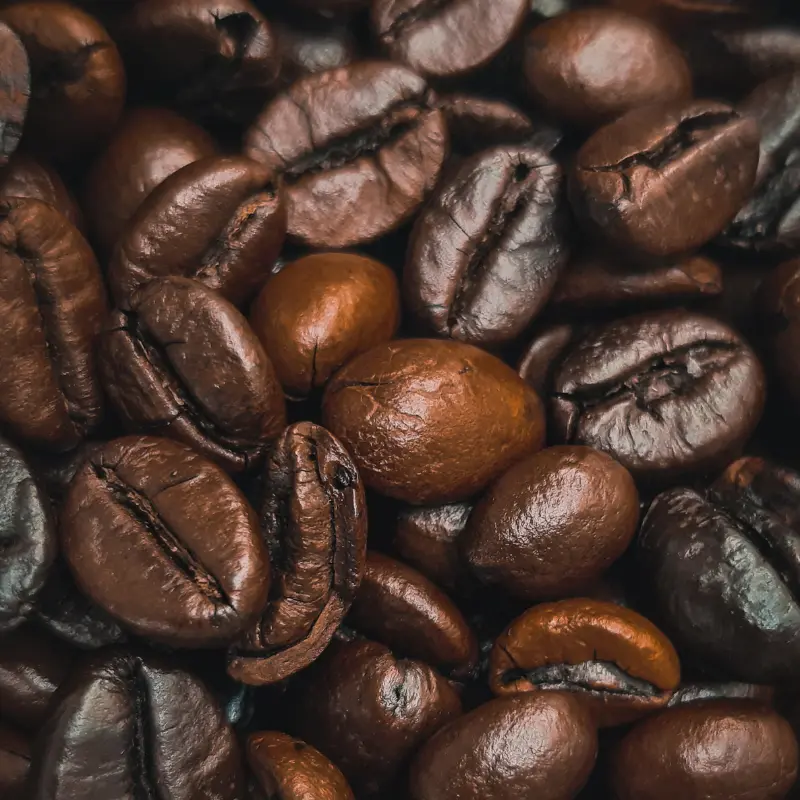
Dark Roasted Coffee Beans
When drinking gold roast coffee, you get the flavors and smells of dark roasted coffee but with 5x less acidity. This means people with sensitive stomachs can finally find themselves with a cup of nutty, chocolatey coffee.
The Process of Making Gold Roast Coffee
There’s a reason gold roast coffee is now just making a big splash on the scene, and it’s not just to be new and hip. Throughout history, coffee roasting has continued to evolve. Roasters originally cooked their beans over open flames whereas today we use modern machinery.
We’ve just recently reached a point where we can roast coffee beans with pin-point accuracy to achieve new types of light roasts. Combine that with international chains that prefer large amounts of sugars, milks, and dark coffee, specialty coffee drinkers rebelled in the opposite direction.
When roasting lightly, you need to roast it at a high enough temperature to cook the bean but fast enough that it doesn’t reach a medium or dark roast.
Blonde roasts have been a part of the coffee scene for some time, but their popularity surged when Starbucks introduced its blonde espresso. However, it’s worth noting that Starbucks’ blonde espresso aligns more closely with a medium roast, known as a city roast, as explained by Drink Golden Ratio. To achieve this roast, beans are lightly toasted just before the first crack, typically around 350-to-375 degrees Fahrenheit. The resulting beans boast a slightly tanned, matte texture, and deliver a tangy and acidic flavor profile. Expect vibrant notes of grapefruit, wine, and citrus, as the natural compounds responsible for coffee’s terroir—its authentic flavor based on soil, climate, and growing region—remain intact due to the gentle roasting process.
Origin and History of Gold Roast Coffee
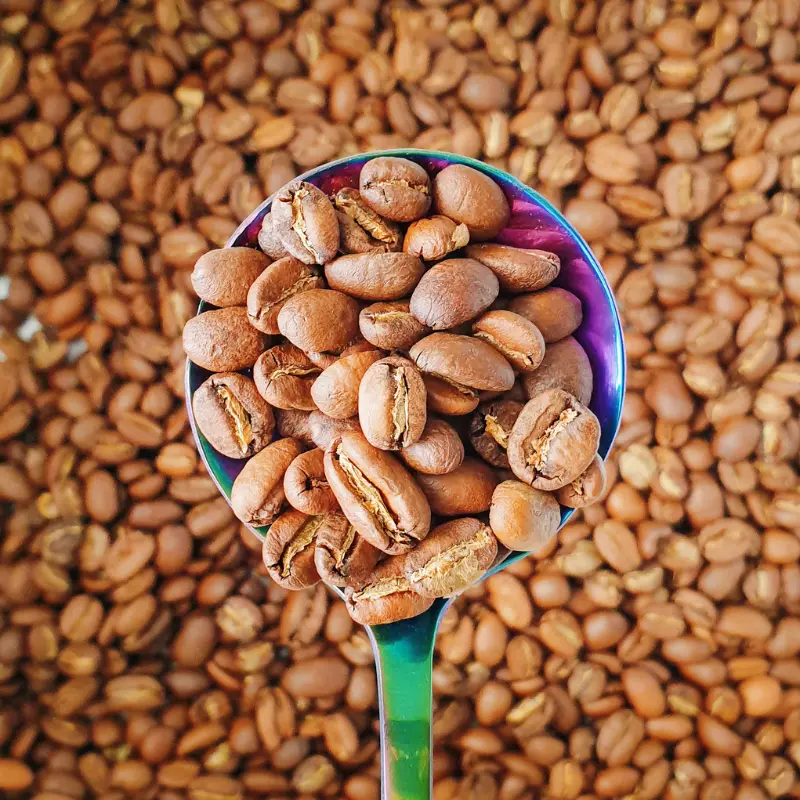
Gold roast coffee was recently popularized by a specialty roaster called Golden Ratio Coffee based in Austin, Texas.
The company is still new to the block, being founded in 2023, so it’s unclear whether the brand has staying power. Golden Ratio Coffee is sourced from three locations, including Nicaragua, Brazil, and Ethiopia. Their coffee comes in easy-to-brew pouches, similar to tea.
But of course, no company can own a type of roast. So if you find a gold roast from one of your favorite companies try it out.
Flavor Profile of Gold Roast Coffee
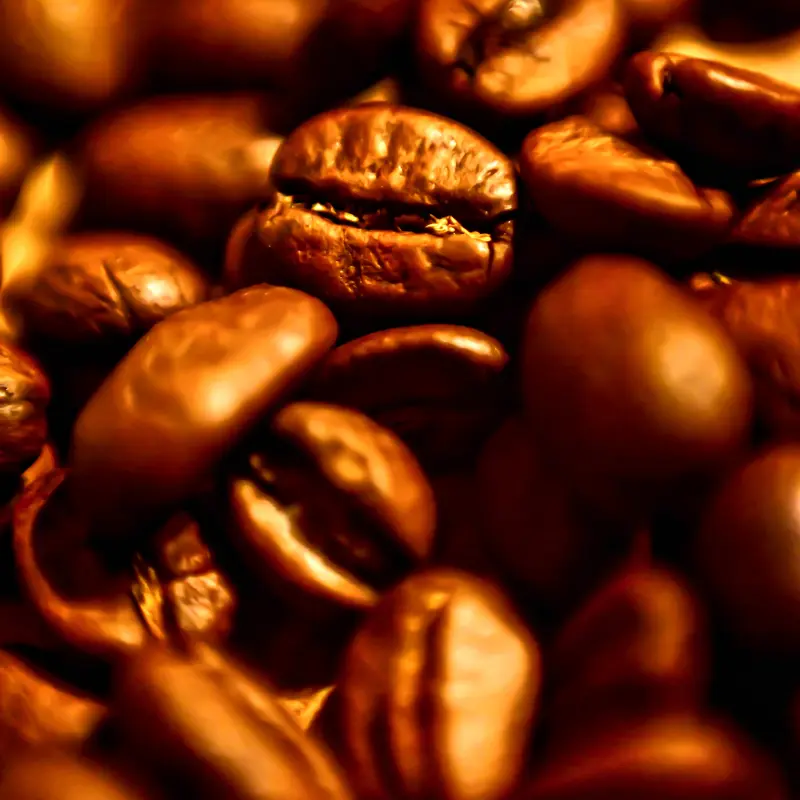
But at the end of the day, if it doesn’t taste good then why would you drink it? Flavor preferences differ, but the light flavors and aromas of gold roast coffee impress. First, you’ll note that gold roasts like Golden Ratio Coffee feature up to 5 times less acidity than a medium or dark roast. It also has zero bite or bitterness to it.
After, the chocolatey, nutty flavors typical of coffee will greet your palette with a smooth taste with little milk or sugar needed. You also can rely on its energizing boost of caffeine, because the caffeine content does not differ with roasts.
In all, this light roast will leave you with a refreshed feeling at the start of your day. This roast offers a balanced flavor with no bitterness, gentle on the stomach with reduced acidity. It minimizes teeth staining compared to darker roasts and packs 5x the caffeine without the jitters.
How to Brew Gold Roast Coffee
The brewing is one part that people love about gold roast coffee. Gold roast coffees are best brewed at a temperature between 195 and 205 degrees Fahrenheit.
Rather than the filters, grinders, scales, and brewing apparatuses required of coffee, gold roast brewing is easy. When featured as a light roast, coffee is more similar to tea than medium or dark coffee. Most light coffees come in tea bags and only need a mug and hot water to brew.
To achieve the best flavor, ensure to let your coffee steep in hot water for five to 10 minutes. If you’re brewing cold, drop your coffee into your water and let it sit overnight.
But of course, the longer you brew it the more caffeine it will have so consider your brew times with that in mind. Also, we always recommend testing out different brew strategies to fit your tastes.
Popular Brands of Gold Roast Coffee
This niche coffee roast doesn’t have a lot of providers, although that may change as demand increases. There are two specialty brands we thought you should look out for:
S.A. Wilson’s Gold Roast
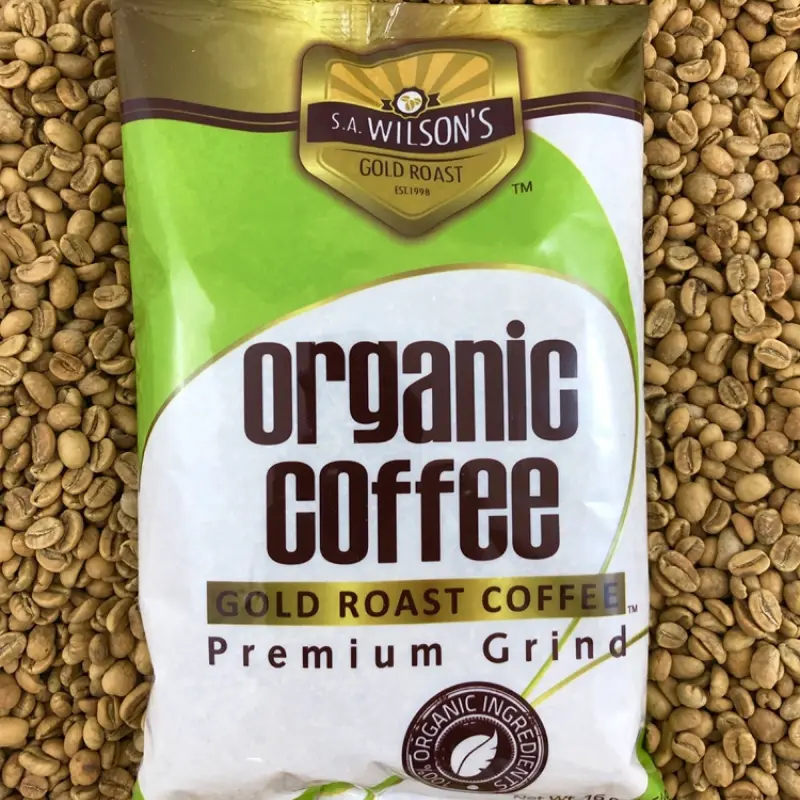
S.A. Wilson’s Gold Roast Coffee
A roaster since 1998, S.A. Wilson has recently added gold roast coffee to its offerings.
On their site you can buy anywhere from 30, single-serving mesh bagged coffee to 40 pounds of gold roast coffee. Their prices are a little more expensive, but they provide wonderful organic assurances that will make the purchase worth it.
Golden Ratio Coffee
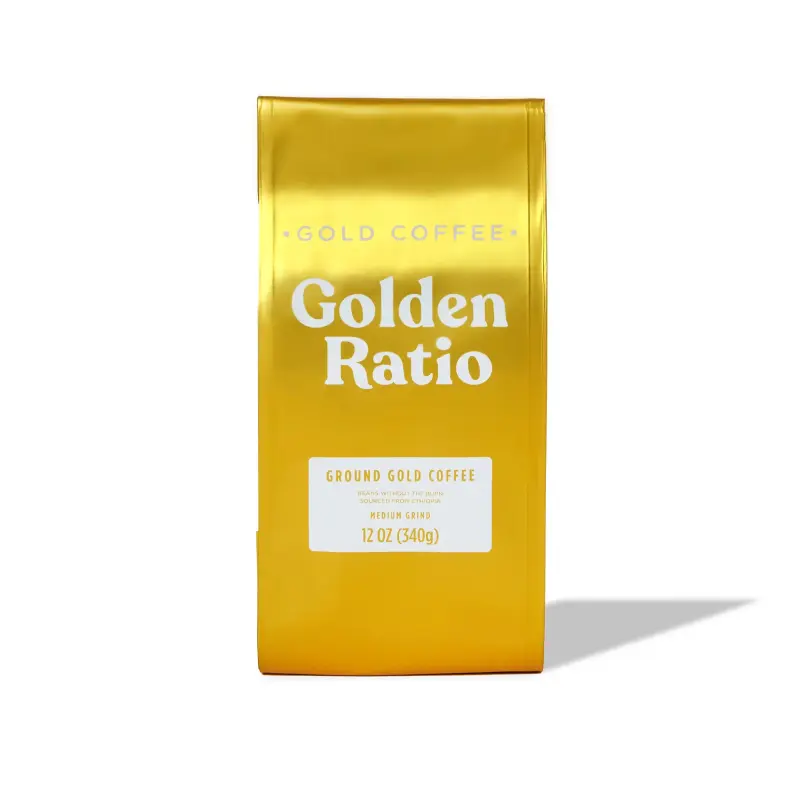
While Golden Ratio is a new specialty business, their gold roast coffee has made a splash.
They market their product toward people who want to drink coffee but have reservations about the taste, teeth staining, or impact on their stomach. There are multiple flavors they sell from Vanilla Coconut to more holiday-themed flavors, so check them out and find your favorite gold roast coffee combination.
Pairing Suggestions for Gold Roast Coffee
When searching for the best breakfast foods to compliment your gold roast coffee, consider going for alternative flavors. A lightly roasted coffee pairs perfectly with buttery and sweet treats such as croissants and avocado.
Due to the smooth and nutty flavors of gold roast coffee, consider pairing it with jelly and toast or a nice pastry filled or topped with sweet cream. A quick scrambled egg with a pinch of salt will compliment your cold-brew gold roast coffee and get you out the door. Whatever your taste buds decide would complement the gold roast coffee is up to you, but think creatively.

Conclusion
On the lighter end of the coffee spectrum, gold roast coffee is currently having a moment where it’s breaking onto the scene. As consumers, it’s up to us to see if the flavor, brands, and benefits are worth our time and money. But for its cheap brewing method of simple mesh bags, it doesn’t require high upfront costs. And with low acidity, zero bitterness, and nutty and chocolatey flavors, it’s easy to understand how gold roast coffee can sway anyone. So explore what coffee has to offer and try out gold roast coffee today!
